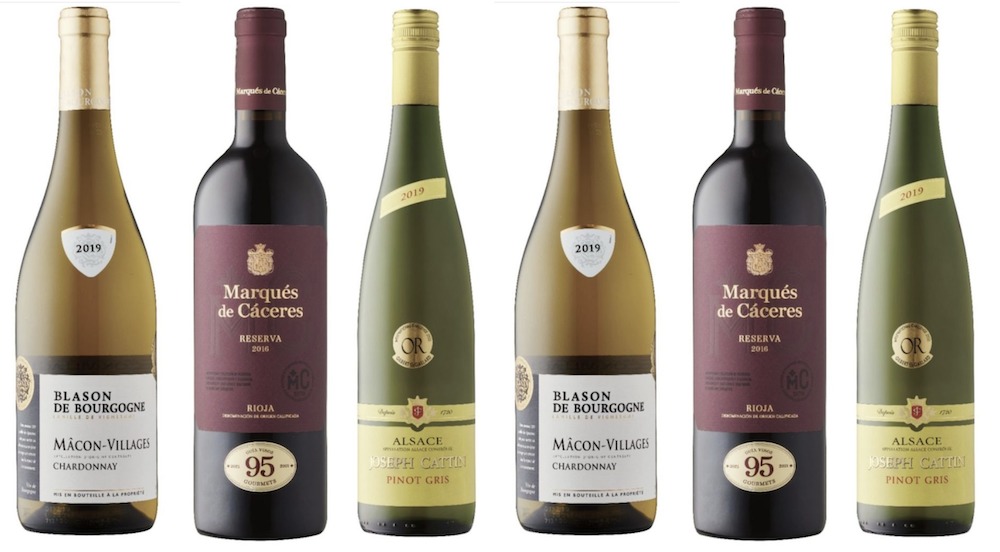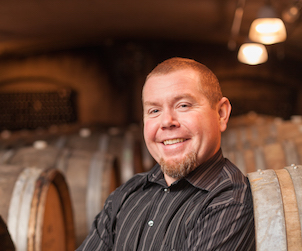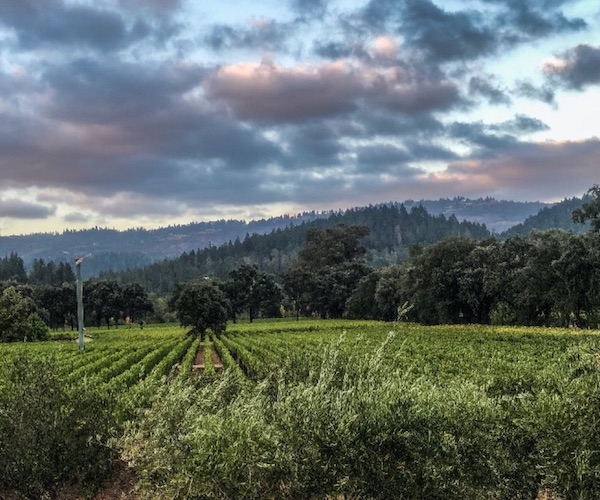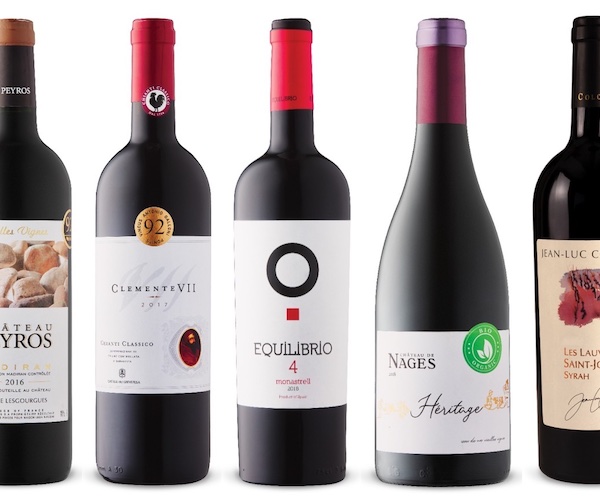My palate was initially formed by diametrically opposed influences. On the one hand, my father’s carefully curated Bordeaux and Bourgogne focused cellar, and on the other, my copious consumption of cheap Chilean jug wines sold at Québec corner stores.
A few years later, when I started working in restaurants, I discovered a “middle road” in fine wines. It offered the same depth, grip, and polish of good Bordeaux with a riper fruited, more opulent style straddling Old World and New. This was the early 2000s, when Super Tuscans were still a relatively new phenomenon.
Though I couldn’t hope to afford the likes of Ornellaia, Sassicaia, or Tignanello, the names filled me with quiet reverence. I was always grateful to accept a glass when wealthy patrons offered. Happily, with the advent of the Toscana IGT appellation in the 1990s, and the modification of Bolgheri DOC rules, many of these illustrious estates multiplied their offerings to include more affordable second and third wines, such as Ornellaia’s Le Serre Nuove and Le Volte.
Over time, the term “Super Tuscan” has faded from many experts’ lexicons, as many of these iconic labels have adopted appellation status, and their styles have evolved and diversified. As with many a premium red wine region, the past twenty years has seen a move to more restrained winemaking. The fashion for ultra-ripe, heavily extracted reds has passed, allowing terroir differences between top more ample expression in the glass.
In May, I had the opportunity to revisit the wines of Ornellaia with the estate’s North American director, Alessandro Lunardi. The focus was the 2021 vintage release, with two contrasting older vintages, to show how the wine evolves over time.
A Conversation between the Sea and the Land
The vineyards of Ornellaia stretch inland from the Tyrrhenian coast to beyond Bolgheri’s famous cypress lined avenue. This area of northern Maremma, in Tuscany, has predominantly marine-origin soils of sandy marl, with more clay-dominant areas strewn with pebbly limestone at higher altitudes. Original owner, Lodovico Antinori planted Ornellaia’s vines in 1981, releasing the first vintage in 1985.
The diversity in soil compositions, altitudes, and mesoclimates – between the more inland areas, and those closest to the sea – allow a wide number of varieties to flourish. Cabernet Sauvignon and Merlot are the estate’s flagship grapes, blended with Cabernet Franc and Petit Verdot in the eponymous Ornellaia and its associate wines; exclusively Merlot for the powerful Masseto. In cooler coastal areas, white varieties are grown, namely Sauvignon Blanc, Petit Manseng, Viognier, Verdicchio and Vermentino.
Consistent Forces and a Changing of the Guards
In 1991, the estate engaged the services of consulting oenologist, Michel Rolland, a role the Bordeaux native he still holds today. “Michel has an encyclopedic memory of every Ornellaia vintage and an incredible sense of how best to express the variations from one season to the next” explains Lunardi.
When Ornellaia changed hands in the late nineties, to Mondavi, and later Frescobaldi, Michel Rolland was integral to maintaining the wine’s signature style. Rolland’s role as a consistent influence in changing times was once again called into service last year.
In 2023, longtime estate director, Axel Heitz, and Ornellaia winemaker, Olga Fusari, both left the estate to pursue new projects. What’s more, Ornellaia CEO Giovanni Geddes announced his retirement at the year’s end. When asked about the possible ramifications of these hugely significant departures, Lunardi was nonplussed.
“Winemaking at Ornellaia is a hugely exacting process, overseen by a highly skilled team. They have been well trained (by Heitz and Fusari). Quality will not be affected by this change in management” he assures me. All the same, it will be interesting to see the personal touch that recently appointed winemaking director, Marco Balsimelli, of Château Gruard-Larose fame, will bring to the wines.
Stylistic Shift over Time
Looking back on Ornellaia’s earliest bottlings, it is interesting to see how the blend has evolved. While the vintages of the 1980s and 1990s were heavily Cabernet Sauvignon dominant, the early 2000s brought a gradual move to greater proportions of Merlot, and secondary blending grapes, Cabernet Franc and Petit Verdot in the wines.
“Cabernet Franc is a fantastic grape for Bolgheri” according to Lunardi, praising the freshness and red fruit perfume it brings to Ornellaia blends. Indeed, this is an increasingly popular opinion, reflected in increased plantings across the region.
Another important change highlighted by Lunardi, was the move to double sorting in 2016. “We introduced optical sorting, as well as manual, and it has been a game changer” he said. Other changes, identified via a quick study of technical sheets dating back to the 1990s, include the introduction of concrete tanks alongside stainless steel, cooler fermentation temperatures, to a maximum 30ºC, and shorter macerations.
The 2021 Vintage
At Ornellaia, each vintage is given a cuvée name to reflect the growing season conditions and the resultant wine style. In 2021, that name was “La Generosità”. The winter was mild and quite wet, allowing the soils to stock up on moisture reserves, which proved a boon through the hot, dry summer. Cooling sea breezes tempered warm weather during harvest, dropping nighttime temperatures and prolonging the growing season.
“We call it an ‘à la carte’ vintage” explained Lunardi, “because we were able to pick each plot at optimal ripeness. We weren’t rushed. The conditions were perfect”. The vintage name, generosity, thus applies not only to the ample, ripe style but also the benevolent growing season.
The critics seem to agree with Lunardi’s enthusiasm for the vintage, as top scores range in the high 90s, making it a favourite on wine investment platforms.
Tasting Notes: 2021s Against Older Vintages
Ornellaia Bianco 2021, Bolgheri DOC
100% Sauvignon Blanc
Attractive Graves-like Sauvignon Blanc with layered aromas of currant bud, nettles, passion fruit, and lemon zest with underlying hints of wet stone. The palate is crisp and highly textural, with zesty citrus fruit and herbal nuances giving way to smoky, toasted oak nuances on the finish. Long and expansive.
![]()
Ornellaia 2021″ La Generosita”, Bolgheri DOC Superiore Rosso
53% Cabernet Sauvignon, 25% Merlot, 15% Cabernet Franc, 7% Petit Verdot
The inky dark, fuscia rimmed colour gives a clear indication of the youthful, powerful nature of this red. The nose is utterly seductive, with heady floral notes, ripe blueberry, and cherry essence grounded by undertones of Mediterranean herbs and cedar. Very fresh on the palate, balancing the bold, very dense core. Despite its youth, the tannins are fine grained and the creamy, toasted oak is remarkably well integrated. Hugely concentrated and ripe. Already approachable but best with 8 – 10 years additional cellaring.
![]()
Ornellaia 2012 ‘L’ Incanto’, Bolgheri DOC Superiore Rosso
56% Cabernet Sauvignon, 27% Merlot, 10% Cabernet Franc, 7% Petit Verdot
The 2012 vintage was dubbed, “the enchantment” (L’Incanto) for its plush character, after a warm, even growing season. After over a decade the wine is still very youthful, with a Bordeaux-like aromatic profile of cassis, plum, licorice and cedar – in a slightly riper frame. Velvetty on the palate, with ripe, plummy fruit and hints of dried orange adding lift. Finishes with marginally chewy, hard-edged tannins.
![]()
Ornellaia 2006 ‘Esuberenza”, Bolgheri DOC Superiore Rosso
56% Cabernet Sauvignon, 27% Merlot, 12% Cabernet Franc, 5% Petit Verdot
In Lunardi’s opinion, the 2006 vintage is a prime example of how the 2021 is likely to develop, as growing conditions were similar. The 15-year-old “Esuberenza” has a lovely harmony of tertiary prune, truffle, mocha notes, with fresher dark fruit and minty, balasamic aromas. The palate is full-bodied and broad, with attractive, dried red fruit flavours giving way to lingering earthy, savoury tones. Fine, subtly chalky tannins frame the long finish.
![]()
(All wines are rated out of a possible five apples)







